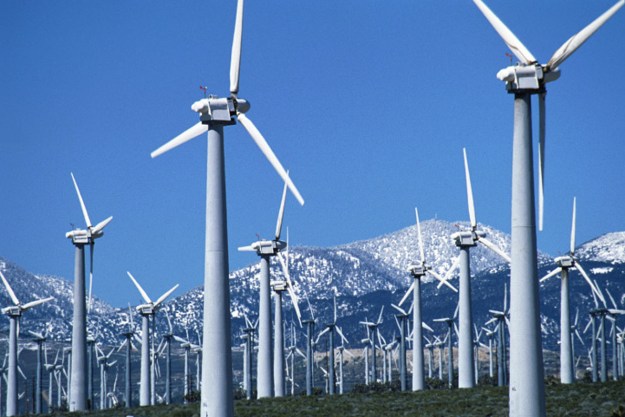
We’re big fans or renewable energy sources, but that doesn’t mean that they don’t come without their own (sometimes unforeseen) challenges. One such challenge? The issue of birds, including federally protected avians such as bald eagles and golden eagles, flying into wind turbines. While bird deaths by wind turbine are comparatively rare next to other causes of fatality, it’s still a problem that needs to be looked into — particularly when it comes to endangered species.
While there is no foolproof solution right now, researchers at Oregon State University want to help. With that in mind, they created a system designed to ensure that wildlife can coexist with wind power generation as harmoniously as possible. Not only does their tech help gauge just how big a problem this is, but it can also take steps to help deter birds (with a specific focus on eagles) from flying into the blades.
“The system is characterized by three functions,” Roberto Albertani, a researcher on the project, told Digital Trends. “[Firstly, an] eagle detection system to alert for birds flying dangerously close to the wind turbine rotor. [Secondly,] the implementation and operation of a simple yet effective ground-based eagle deterrent to safely scare eagles away from the wind turbine, and, thirdly, a blade collision detection and species recognition system.”
The smart impact detection system works by employing vibration sensors mounted to turbine blades, a video camera, and acoustic sensors. This allows the researchers to track which birds are in the area, as well as activate a ground-based deterrent in the form of randomly moving, colored facsimiles of people, which can help scare off the birds before they meet an untimely demise. Think of it like the airport bird deterrent system which mimics birds of prey to scare off regular smaller birds — only this time the goal is to scare off the larger birds themselves.
The researchers have so far put their system through its paces by firing tennis balls at turbines to show that the system is able to respond quickly to fast-moving objects. However, testing is set to continue.
“The eagle detection has been partially tested using trained eagles and showed good potential,” Albertani said. “Birds deterrent has been fully tested and blade impact detection will be tested with dummy targets.” The completed system will be tested in real operating conditions at the National Wind Technology Center in Boulder, Colorado, between summer and fall 2018.
Editors' Recommendations
- ‘World’s largest sundial’ to double as green energy provider
- Cailifornia has a blackout problem. Could giant flow batteries be the solution?
- Harnessing darkness: The race to solve solar power’s greatest problem
- Could wooden windmills make a comeback? Sweden’s newest turbine shuns steel
- Lithium-ion is just the beginning. Here’s a peek at the future of batteries


